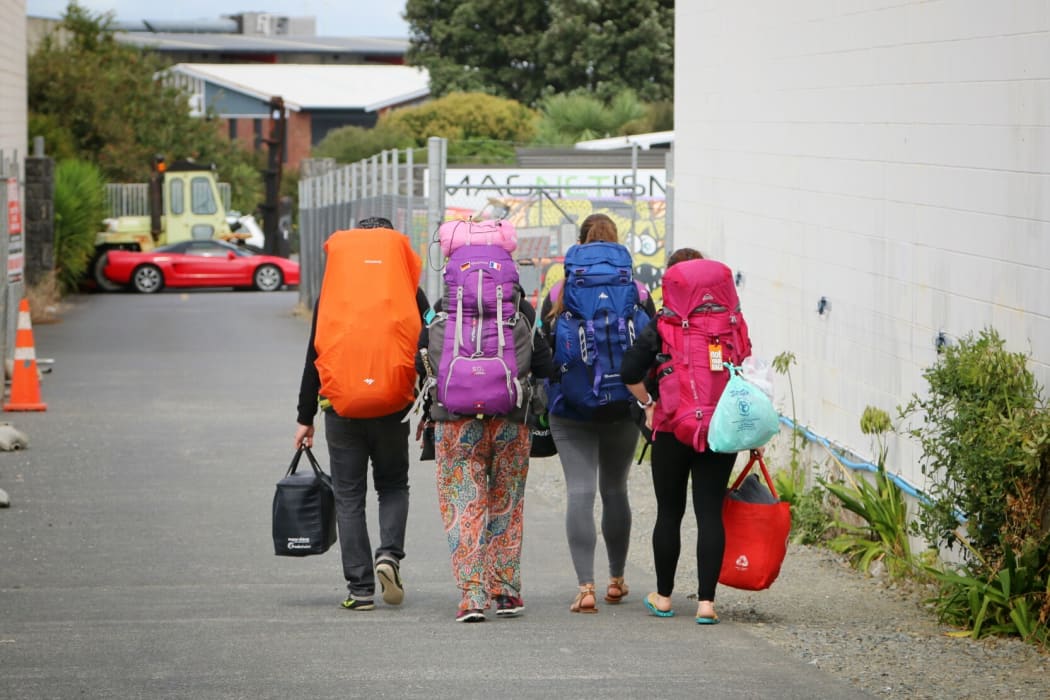Tourist hotspots throughout the country have been hit hard by record levels of visitors to New Zealand, a tourism consultant says.
Tourism numbers have increased by 24 percent since 2013 and, in June 2016, reached 3,310,000.
And those camping away from paid accommodation are in the spotlight again, as some councils call for a national law to govern freedom camping.

Photo: RNZ/ Tom Furley
An estimated 60,000 freedom campers visited the country annually over the last three years, according to the Ministry for Business Innovation and Employment.
In some areas, a lack of infrastructure such as car parks and toilet facilities means rubbish and human waste is being left in the open. There have also been reports of freedom campers disturbing breeding sites, and conflict with locals.
The Christchurch City Council is considering a total ban on freedom camping in vehicles without toilets.
While some councils had by-laws and could fine freedom campers if they breached rules, Grey District Mayor Tony Kokshoorn said this could be unfair on tourists who were unaware of what the rules were and more national consistency was needed.
Former Thames Coromandel chief executive and now tourism consultant David Hammond told Nine to Noon councils needed to be more innovative with how they paid for infrastructure and a national standard for freedom camping should be looked at.
Tourist numbers were at a peak and were last at this level during and after the 2011 Rugby World Cup. In the interim, councils had failed to invest in infrastructure, he said.
"We've been caught short," he said.
Alongside councils learning how to put pay-for-use models into their own area, there was a raft of work being done on everything from bed taxes and airport taxes to other models needed to fund infrastructure, he said.
"This comes into the debate about who should pay. We know we need more toilet and rubbish facilities. Should the ratepayer pay for it?
"Across the country, ratepayers on average are paying $37.90 already towards their tourism industry. In Tekapo, where it blew up last summer, ratepayers are paying over $80 per head of population. Should they be expected to pay more? No.''
He said local government needed to be more innovative, but it was not yet good at learning from other good working models.
Mr Hammond cited the example of Hot Water Beach, where the council put in a pay-for-use carpark.
"I know that was a fuss at an iconic site. It was put in for about $25,000 and in two and a half years it's raised $169,000. That money was ring-fenced and this year the council will be putting in very flash showers and toilets facilities for visitors out of money raised by the car parking.
"These are the type of innovations to off-set the cause for either government or ratepayers to pay that we need to learn from across the country.''

